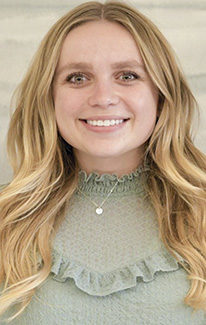John Meyer has been CEO of Holstein Association USA (HAUSA) for the past 23 years. Progressive Dairy Editor Matti McBride asked Meyer a few questions about his tenure with HAUSA prior to his retirement in December 2024.
How did you first become involved with HAUSA? How has your role evolved to CEO?
MEYER: In 2001, HAUSA hired an executive search agency to recruit a new CEO. At that time, I was in my fifth year as executive secretary of the Brown Swiss Cattle Breeders’ Association. The agency contacted me and conducted a thorough interview process with the HAUSA board of directors, which led to my hiring. The 23 years I’ve spent working for the dairy farmer members of HAUSA have been a wonderful experience.
In your opinion, what is the most significant improvement the Holstein breed has made in the past 20 years?
MEYER: The Holstein breed has made tremendous progress in both the production of components and milk. From 2003 to 2023, Holstein annual fat production has increased 25% from 926 pounds to 1,159 pounds. Protein production has jumped from 748 pounds to 893 pounds, which is an impressive 19% increase. Milk production has gone up 12% from 25,088 pounds to 28,138 pounds.
These profound component and milk production increases have given Holstein cows a significant profitability advantage over all other breeds of cows. The Profitability Study published by the Michigan State University Extension in June of 2022, which evaluated costs and revenues of Holstein and Jersey cows managed in the same manner and location on three dairy farms in or near Michigan, clearly shows how those production increases lead to greater profitability. In the study, partial budgets were constructed to address breed differences in milk revenue, milk bonuses and discounts, feed costs, cost of herd replacements and value of cull animals and non-replacement calves. The study found that Holstein cows were, on average, $456 more profitable per cow annually than Jersey cows, with 77% of the revenue advantage for Holsteins coming from producing about 810 additional pounds of components annually.
What projects are you most proud of developing during your time with HAUSA?
MEYER: During my time with HAUSA, we’ve developed a wide array of new programs, products and services. A few of those I’m particularly proud of include:
- The Holstein COMPLETE program
- The purchase of AgriTech Analytics (ATA), our dairy records processing center in Visalia, California
- Our partnership with Zoetis to enhance genetic improvement in Holstein dairy cattle through Enlight – this tool provides dairy farmers with a comprehensive view of herd-level and individual genetic performance
- HAUSA’s annual Elite Breeder, Distinguished Leadership, Star of the Breed, Herds of Excellence, National Elite Performers and Regional Elite Performer Awards
- Holstein Marketplace Sires
- Our nationally televised show, Holstein America
- HAUSA’s Genetic Research Grant Program
- TriStar AMR (automated milk records) program for robotic milking herds
- The WKU SmartHolstein Lab
- Our work in Washington, D.C. on behalf of our member producers regarding animal identification and milk pricing
- Opening our office in Fort Atkinson, Wisconsin, which now gives HAUSA a business presence from coast to coast with offices in Vermont, Wisconsin and California
How do you see the Holstein breed influencing the next 20 years of dairy production?
MEYER: The genetic progress of the Holstein breed will continue to accelerate. The diversity of genetics available for dairy cattle breeders and the vastness of the Holstein population in the United States and around the world separates it from other dairy cattle breeds. Likewise, the Holstein cow’s ability to efficiently convert feed to high-quality component-filled milk will be the key in providing the growing demand for dairy proteins across the globe, not only today but for future generations. Bottom line, no other breed or combination of breeds can produce the large volumes of high-quality milk, fat and protein like Holsteins do.
What are your plans for retirement?
MEYER: While I’ll certainly miss my role with the HAUSA and the regular interaction with our great members, retirement will give me more time to spend on other things I enjoy. This includes more regular involvement with my family’s farm in Franklin County, Iowa; and being more active on the bank board of directors and committees I serve on during retirement. My wife, Vicki, and I look forward to spending a lot of time in the winter at our home in Gold Canyon, Arizona. I also look forward to spending more time volunteering in several areas, and I’ll have a lot more time to spend enjoying outdoor activities with my wife.



.jpg?t=1687979285&width=640)


